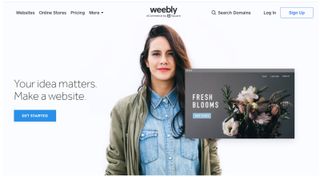Anyone who's ever applied to university knows that the information available through both University websites and UCAS is, as a recent report from UX agency Nomensa coyly puts it, "non-optimal". Universities may have been the earliest adopters of the internet, but they remain behind the times on delivering great online user experiences and the content that is central to them. University websites are out-of-control behemoths, deep mines of content and information that the user enters at their peril.
It's been a busy few weeks for those who think this needs to change. Which? has launched a new University comparison website. The official UniStats website is now live, giving for the first time easy access to comparative stats on such things as student satisfaction, employability and cost of living. And we have this report from Nomensa, exploring how such sites could make it easier for students to find and compare University choices, by co-opting the proven design patterns of ecommerce.
But I'm not celebrating just yet. Having spent five years of my early career as editor and then co-owner of an independent guide to UK universities, I am filled with the scepticism of those who have been there, done that and got the T-shirt when it comes to trying to provide would-be students with better information about their choice of university.
Universities are not ecommerce businesses, with a singular organisational purpose (sell more widgets) and an obvious ROI from improving the shopping experience. Universities are complex, siloed organisations. They serve multiple, often competing audiences: prospective students, current students, staff and industry. Even their core mission is ambiguous. Do they exist for profit, or for the common good? Are they there to teach, or undertake research? Should that research deliver commercialisable IP, or be blue-skies work whose commercial exploitation lies may decades in the future?
All very messy.
So it’s no wonder their websites are messy too. And untangling this mess will take more than showing them a few wireframes and user-test results. This is a political and cultural battle that requires changing universities' whole mindsets around the information they offer to students.
The guide I ran was founded in the early 90s on the same premise behind the Nomensa report: the information available to students is “non-optimal”. We didn't call it 'non-optimal', of course. We called it crap. Prospectuses full of marketing blah, concrete campuses artfully photographed through the only bit of greenery for miles, lacking comparative statistics, ruthlessly hostile to any kind of league table. We set out to change that. Not everyone was a fan, especially not the universities. They loathed our simple thumb up/thumb down scoring of academic performance, social life, cost of living and price of beer. We were threatened with libel action for daring to publish statistics on the percentage of students who failed to complete their courses. Heads of PR got on the phone to complain that we described the North Sea as cold, and Aberystwyth as a long way from anywhere.
Some battles have been won. Open data has come to the HE sector. The National Student Survey and compulsory Key Information Statistics, which are central to Nomensa's proposed comparison tool, mean universities must now submit to being scored on measures such as student satisfaction, cost of living, and future employability. Information that, if it could be acquired at all, used to require expensive and time-consuming annual research now flows freely from an open API, ready for any willing provider to exploit.
But this is only half the information battle. Students do not all want the same experience from university. To decide which university is right for them, students need quality, qualitative content about that experience. This is not a decision where price and the five-star review should rule. This is why universities' own websites are so important. And getting them to fix those big, messy, out of control websites is going to be much harder.
It means accepting universities are not ecommerce businesses. It requires a UX and content strategy, focused as much on organisational change as what users want. Staff must be won over, unmanageable mountains of content tamed, consistency brought in, publishing systems developed that allow the same information to be delivered to different audiences in different ways, and user-centred principles embedded in the heart of the organisation.
These problems are not unique to universities. They afflict many public sector organisations. To those within these organisations, the challenge can seem insurmountable, especially when faced with tens of thousands of pages of messy, legacy content. But projects such as GOV.UK show that with the political and organisational will to embed the user at the heart of their work, a solid UX and content strategy, and a willingness to tackle the hard problems, it can be done.
Universities are not ecommerce businesses

Thank you for reading 5 articles this month* Join now for unlimited access
Enjoy your first month for just £1 / $1 / €1
*Read 5 free articles per month without a subscription

Join now for unlimited access
Try first month for just £1 / $1 / €1



